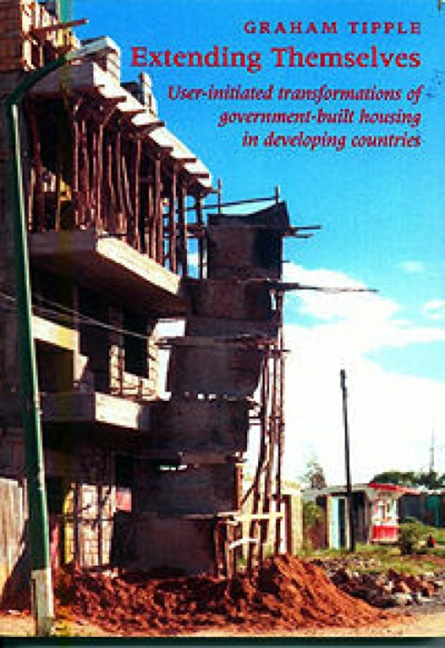 Extending Themselves
Extending Themselves Book contents
- Frontmatter
- Contents
- Acknowledgements
- 1 Introduction
- 2 The housing squeeze
- 3 More than just a dwelling
- 4 The financial element: transformation as an investment
- 5 Sustainability issues
- 6 The transformation process
- 7 The case for transformations
- 8 Policies for enabling transformations
- Appendix 1 Transformations in Bangladesh
- Appendix 2 Transformations in Egypt
- Appendix 3 Transformations in Ghana
- Appendix 4 Transformations in Zimbabwe
- Appendix 5 An assessment of the decision to transform
- References
- Index
Appendix 2 - Transformations in Egypt
- Frontmatter
- Contents
- Acknowledgements
- 1 Introduction
- 2 The housing squeeze
- 3 More than just a dwelling
- 4 The financial element: transformation as an investment
- 5 Sustainability issues
- 6 The transformation process
- 7 The case for transformations
- 8 Policies for enabling transformations
- Appendix 1 Transformations in Bangladesh
- Appendix 2 Transformations in Egypt
- Appendix 3 Transformations in Ghana
- Appendix 4 Transformations in Zimbabwe
- Appendix 5 An assessment of the decision to transform
- References
- Index
Summary
Introduction to Medinet Nasr, Cairo, and Workers’ City, Helwan
The Egyptian case study is particularly interesting because the dwellings involved are multi-storey walk-up flats. The visit to Workers’ City, Helwan, with its extensions crowding onto the façades, was one which began our interest in transformations and in the reasons why some people transform and others do not.
Cairo is the capital of Egypt and a regional centre for North Africa and the Middle East. Greater Cairo is by far the largest city in Egypt with a population of 12 million in 1991, and the largest city in which our study has been undertaken. Greater Cairo consists of three governerates: Giza, Kalubia and Cairo, the last of which contains both our study areas, Medinet Nasr and the Economic Housing of the Workers’ City, Helwan.
In the Cairo Governerate in 1991, there were an estimated 1.46 million households with an average of 4.9 people; a population exceeding seven million. The annual population increase is estimated at 125,000, there are 50,000 marriages every year and the number of new households is estimated to grow at 2.6 per cent per annum (Kardash, 1994). Helwan is an industrial town south of central Cairo but within the Cairo Governerate.
Cairo is a city of great inequalities in housing provision. While households at the top of the income range hold three and more flats empty against the day when their children reach maturity, others crowd into very rudimentary accommodation in high-density areas in conditions graphically described by Wikan (1980). Thus, while the number of dwellings (1.73 million in 1986) exceeds the number of households, many households are severely crowded and find alternative accommodation impossible to locate. According to the 1986 census, the average occupancy rate in Cairo was 1.5 people per room and there were 15 m2 of floor area per person; 22 per cent of dwellings are owner-occupied and 56 per cent are rented; there was a vacancy rate of about 15 per cent.
About 70 per cent of Cairo's population live in poor quality housing generically described as ‘Ahiaa Shabbiaa’, literally meaning ‘popular quarters’. This categorisation would include the majority of public housing projects (including our case-study neighbourhoods), the informal settlements, and the Fatmid core of Cairo.
- Type
- Chapter
- Information
- Extending ThemselvesUser Initiated Transformations of Government-built Housing in Developing Countries, pp. 204 - 242Publisher: Liverpool University PressPrint publication year: 2000


